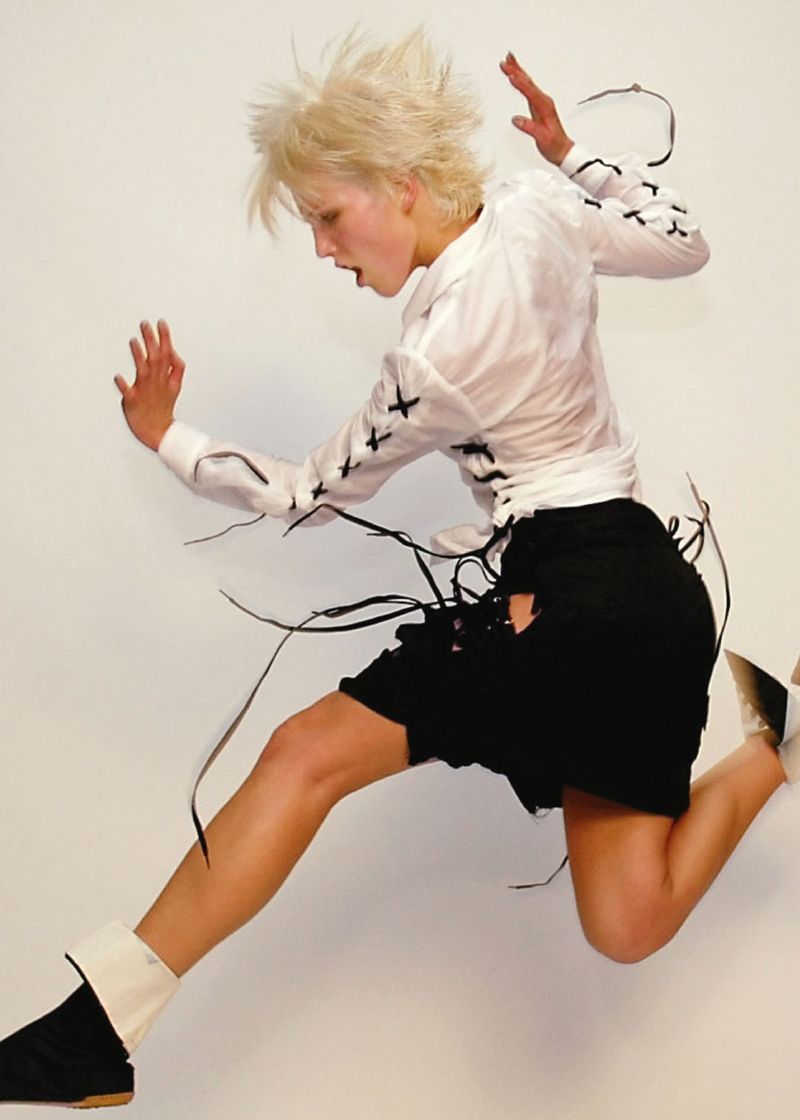
Glory days
The insiders and creatives behind Zimmermann, Sass & Bide and Ksubi share an oral history of their golden era in Australian fashion
MARIE-CLAUDE MALLAT [Zimmermann publicist]: Back then, Paddington Markets was just what we did on a Saturday. It was a ritual in the early ’90s: everyone went there to buy their outfits for Saturday and Sunday night. It had a festival feel and was very fashion-skewed with lots of emerging designers. It felt experimental. Dinosaur Designs, Third Millennium, Morrissey, Leona Edmiston and Wayne Cooper all started there. Nicky Zimmermann sold fantastic jeans with eyelets at the front – so rather than a zipper, they tied up. She’d sell out every week.
SIMONE ZIMMERMANN [Zimmermann co-founder]: Nicky was at Paddington Markets and I left a corporate job to work with her – and all of a sudden we have a business. We’re making stuff, we’re carting things around, we’re moving from place to place – just the two of us. We’re sisters and we were friends, but we hadn’t worked together until this point.
NICKY ZIMMERMANN [Zimmermann co-founder]: We got a little store on South Dowling Street in Sydney. The kitchen was our stockroom, the middle floor was a store, and upstairs was a hilarious little office. And that store was tiny, smaller than the office I’m sitting in today.
SARAH-JANE CLARKE [Sass & Bide co-founder]: Heidi and I met in Brisbane through our boyfriends at the time. We became joined at the hip. We used to make these little linen twin-sets – we’d design our pieces and take them to a tailor to get them made. I would be the pink twin-set and she’d do the blue twin-set. So the friendship really formed around clothing and a similar aesthetic; it was in our DNA. In London, every Friday we’d leave our jobs and race down to Portobello Market to buy jeans, then take them to a tailor and get the fit altered. After a while, instead of buying other people’s things and altering them, we decided to make our own. And then our visas ran out in 1999; we had to leave London, so we thought, oh, we should start something back in Sydney.
HEIDI MIDDLETON [Sass & Bide co-founder]: We didn’t want to go back to our day jobs and figured this was our chance. There was a bit of sweet naivety – that innocence of youth where you just feel a bit invincible and think, what have we got to lose?
PIP EDWARDS [former publicist/designer for Ksubi]: The Ksubi [formerly Tsubi] boys were hot. They had so much charisma and style. They were just ... unique. They came out of nowhere and had their own vibe. That was intriguing because they appeared not to care, you know?
GEORGE GORROW [Ksubi co-founder]: Dan Single [Ksubi co-founder] was wild back in the day. He’d pick me up in his Cadillac, but he’d be driving in roller skates. He went through this roller skate thing where he didn’t take them off for three months. So he walked around, drove cars, did everything in roller skates. Like, the guy was out there. He was an amazing connector. He didn’t really have that business acumen, none of us did. But what we did have – and he was loaded with it – was an energy to do something and a non-fear of anything we’re about to do.
MARIE-CLAUDE MALLAT: There was definitely an energy in the industry, and people were having a good time. Designers tended to come in as start-ups and just have a go: they had nothing to lose – and because they had almost nothing, it was easier to take risks and experiment. There was definitely less self-consciousness and less filtering, more joy.
“We were removed from the REST of the world. There was a PIONEERING feel; it was raw.”
SIMONE ZIMMERMANN: Australia was so removed from the rest of the world. There was a pioneering feel to it. It was raw; you’d walk down the street in Sydney and there’d be crowds of people and things happening everywhere. You’d go to clubs and bars – in Paddington, Oxford Street – and it was just a hub of people moving up and down, whether it was Saturday shopping or Friday nights out. It felt very, like, oh, we’re here! Like we were part of all that energy. It was exciting.
DAN SINGLE: We were so far away and there was no internet ... actually, there probably was internet but there was no Instagram. There was just nothing to follow. You could buy i-D magazine or you could fly overseas if you were lucky enough to go see a runway show in Paris, but we were just an island. So people would make up their own stuff.
PIP EDWARDS: Everyone from around the world wanted to be here. People had heard what was going on in Sydney at that time. Kanye came here and recorded with Connie [Mitchell of Sneaky Sound System]. Ashley Olsen was dating our LA partner and they came out and stayed with us up in the Northern Beaches. That was cool. They were funny. And ... little.
NICKY ZIMMERMANN: Within the first three years we were a proper business that, in a very small way, was flourishing. Simone and I are adventurous – we probably grew the business out of boredom and naivety rather than any great plan. We were like, we’ll just give it ago. If we got an order, our motto would be: “No matter what, we’ll get it done.” We were learning what to do by our mistakes.
PIP EDWARDS: Ksubi was so DIY – I didn’t realise how much so: Dan was sewing jeans in the back of his car. It was really so raw.
SARAH-JANE CLARKE: When we first launched the business, I was doing all the back-end stuff, like the faxing. The orders would come in overnight, and I would get there at 8.30am to collate them and see which orders had to go out – that was my job.
NICKY ZIMMERMANN: Hilarious things used to happen. There was a methadone clinic up the road, and the van that Simone and I shared while we were still doing the markets would literally get broken into every single day. So we would just leave it open and leave an apple or something in there, you know, just so that someone would come away with something …
PIP EDWARDS: When I first started at Ksubi, my title was Legendary Sexretary. That’s what my business card said. And Dan’s business card said Really Important Guy. What a time. It wouldn’t fly today.
SARAH-JANE CLARKE: The male photographers would come out and they’d say, “Girls, do you think you could take your tops off and hug each other?” They always wanted us sort of holding hands, you know? And we were like, “Uh, no. No!” It was that era.
PIP EDWARDS: And the Ksubi slogans! God forbid, you could never do that today. The things that they said and did – it was really brazen. But the thing is, they were three hot boys doing their thing with no commercial regard. It wasn’t strategic. It was literally a family vibe. A group of friends wanting to have fun.
GEORGE GORROW: When we first started, we had this thing: if we came up with something, no matter how dumb it was, if we all liked it, we had to run with it and work out the details later. So we just did it whether it was dumb or not. And some things we probably shouldn’t have done.
PIP EDWARDS: The processes were whack. A lot of people who were hired were friends; they weren’t hired for their skill sets. But it was important for the culture, and that’s something you can’t replicate. We ended up being a bit cultish. But look at all the people who started at Ksubi and where they are now. Double Rainbouu, Bassike, P.E Nation, The Elder Statesman, Jordan Askill – it was an incubator.
SARAH-JANE CLARKE: It was an absolute dream to be working with my best friend and creating pieces that we just were so in love with. And I think the success of our brand was due to the fact that people loved the story of Heidi and me, our friendship. They could relate to that, they wanted to see us together: if one of us went to an event and the other one wasn’t there, they’d be like, “Oh, where is Heidi?” and vice versa.
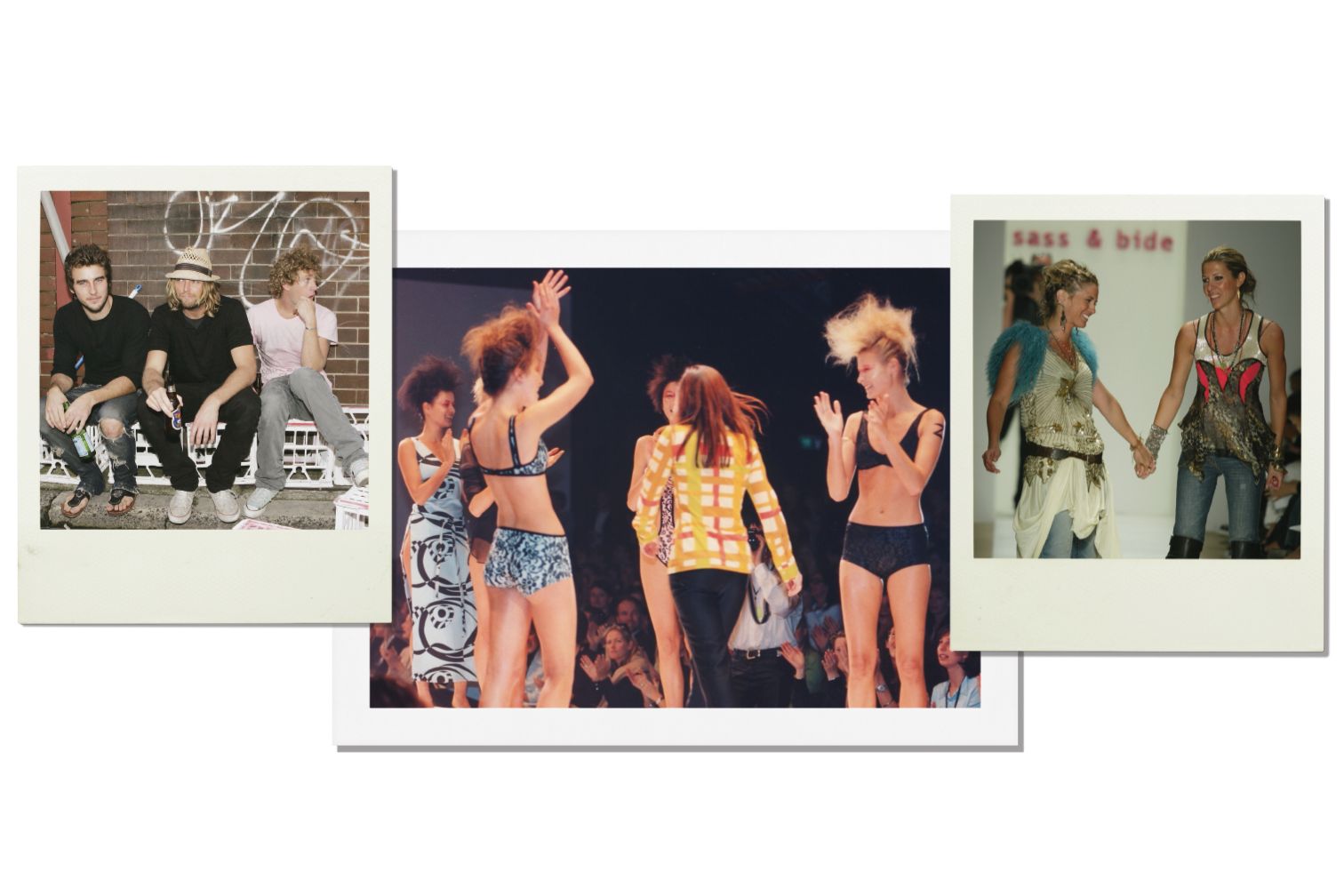
MARIE-CLAUDE MALLAT: It started off quite competitive between Australian designers. And certainly during that time, you had to know your place; it wasn’t as democratic as it is today. There was definitely a lot of rivalry, but eventually that all mellowed and came into becoming a lot more supportive.
NICKY ZIMMERMANN: The industry was pretty competitive, but it was also a lot of fun. There were a lot of parties – big parties – and we all went. It was always the designers, the actors, people in bands. Like the Cointreau Balls. One had a giant ice room where we slid down a huge blow-up slippery dip into the room. At that point in time, no-one had ever seen that kind of extravaganza. You had to get dressed up – and they were asking the right people to get dressed up. There were people who were starting out doing hair and makeup, too ... then you’d have people like Kerri-Anne Kennerley. It was hilarious, and loose. No cameras, so there was so much more time spent being fun. You can’t kind of describe it unless you are with the people who were there, because it doesn’t happen now.
SIMONE ZIMMERMANN: I couldn’t even believe we were invited.
SARAH-JANE CLARKE: We were out almost three times a week. That was when actual parties happened. It was the good days: no phones, no cameras. If you got in the front door then you were in the party, part of the fashion cool crowd. There were openings, and all the photographic studios would have parties. It was like everyone had to have a party in order to get their name out and about. Then there were afterparties...
SIMONE ZIMMERMANN: We were at every event that we got invited to – we were definitely going because it meant a free drink. And there was always something going on.
NICKY ZIMMERMANN: We didn’t have phones, so when you wanted to find your friends you just knew which pub or bar to go to, and you knew the progression – that, oh, by 12 o’clock they’ll be at this one, so I’ll go down there. But you couldn’t ring them and I think it made that whole thing really different. There was, I don’t know, just a little bit more freedom. Maybe because it was our youth that made it feel more free and fun, but it just was.
PIP EDWARDS: It was every Friday night. I mean, it’s as simple as that. You’d lose your mind and not sleep from Friday to Monday. I’m pretty sure I can only clock whatever happened in that period by what I was wearing, because I don’t remember anything else.
SIMONE ZIMMERMANN: Would I want to do it now? Definitely not. But I did enjoy that buzz and looseness of the late ’90s and the early 2000s.
HEIDI MIDDLETON: At the time, it was like this underground creative movement of DJ friends or stylists or other designers or makeup artists or models, all doing new things. We didn’t all have big backers or funding, so the creativity was heightened because we had to be more resourceful. Whether it was the parties or the shoots or the clothes we were making, it was experimental and wild. I think it was unique to that time.
“It was the GOOD days: no cameras, no phones. That was when ACTUAL parties happened.”
NICKY ZIMMERMANN: We showed in the very first Australian Fashion Week in 1996, I think there were eight of us designers in total. Marie-Claude was there yelling in the background mainly because none of us knew what we were doing. And I’d had the idea that I wanted to do swimwear that was mixed in with the clothing. That was five years into the business and we didn’t do swimwear at the time. It was a bit of a random idea, something that we thought that we could sell internationally because it would make sense with our provenance. It wasn’t an Australian brand trying to be a French brand. It was an Australian brand being Aussie ... and it worked.
MARIE-CLAUDE MALLAT: We were lucky enough to be able to cast some really great emerging models: Emma Balfour, Sarah O’Hare [now Murdoch] and Annalise Schubert. They were all about to start breaking international runways. The other designers, including Alex Perry and Wayne Cooper, had much bigger budgets and fan bases – their shows felt more like rock concerts than fashion shows. But after that first show, we were splashed all over the newspapers and Zimmermann was named the new guard. It felt amazing.
SARAH-JANE CLARKE: We were all quite good friends, our little group of designers. It was us, the Ksubi boys, Camilla Franks, all of them ... We met the Ksubi boys where we used to make and wash our denim. I remember seeing Dan Single at the maker, and we’d talk about industry things. We used to swap stories and swap makers. I guess everyone protected their trade secrets a bit, but it was a time where it was carefree and bohemian and we were just like young kids living their dream. Ksubi launched so close to us, and we both showed for the first time at Australian Fashion Week in 2001.
GEORGE GORROW: I don’t know if you’ve ever had green Chartreuse, but it’s a fucking intense drink. So we were wasted on that one night and Dan said, “Oh, should we talk now about the show?” And I was like, “Oh, yeah, what do you wanna talk about?” And he asked, “What models come out first?” And I was like, “Fuck, I’d rather a plague of rats come out.” And he goes, “Yeah, that’s not a bad idea.” So we went back to Sydney and we just started trying to find these fucking rats. We had to do a lot of, um, dodgy shit to get that approved. But yeah, we ended up doing it.
PIP EDWARDS: I snuck my way into the rat parade. I was a little nobody, I wasn’t even invited. And we didn’t even know what it was about. We didn’t know what was going to happen. But I shouldn’t have even got into The Hordern Pavilion.
DAN SINGLE: We told Fashion Week that we’d talked to these rat experts and they’ve got a new rat repellent, so we’re gonna have a perspex frame up with a rat repellent, and the rats can’t get over it. And we just made up a height that was, I don’t know, 15 centimetres or something, which we thought was enough to hold the rats. We didn’t know what they would do, but when they got to the end of the runway, they started piggybacking each other and jumping off. One of them jumped at the feet of Joan Burstein from Browns and she jumped up and screamed and ran out of the show. But then she waited outside and the first person we got to meet afterwards was her. She came back in and said, “That was amazing. I had to run, I didn’t get to see it at all, but it’s great.” And we wrote an order for Browns.
SIMONE ZIMMERMANN: I remember thinking, oh my God, I’m glad I wasn’t there.
GEORGE GORROW: That was pre-social media, right? The word was spreading by word of mouth. So we’d be at an underground club in London after that and someone would come to us and go, “You guys are the rat guys!”
DAN SINGLE: The rat guys.
MARIE-CLAUDE MALLAT: Ksubi and Sass & Bide breaking onto the scene changed the industry’s shape. It was great to see.
GEORGE GORROW: If you look at the way fashion ran before we came in, everything was so tight, so structured. There were these rules, that to be a fashion designer you had to study, you had to go and do this, you had to do that. It was that era, the first wave of streetwear that was just so regimented and modernist. And then we came in with this stuff that was totally off to the side. We sort of broke it down. To allow for the possibility that if you’ve got an idea, you wanna make clothing, you could just come in and push through. I feel like – in Australia at least – we broke down those barriers a little bit.
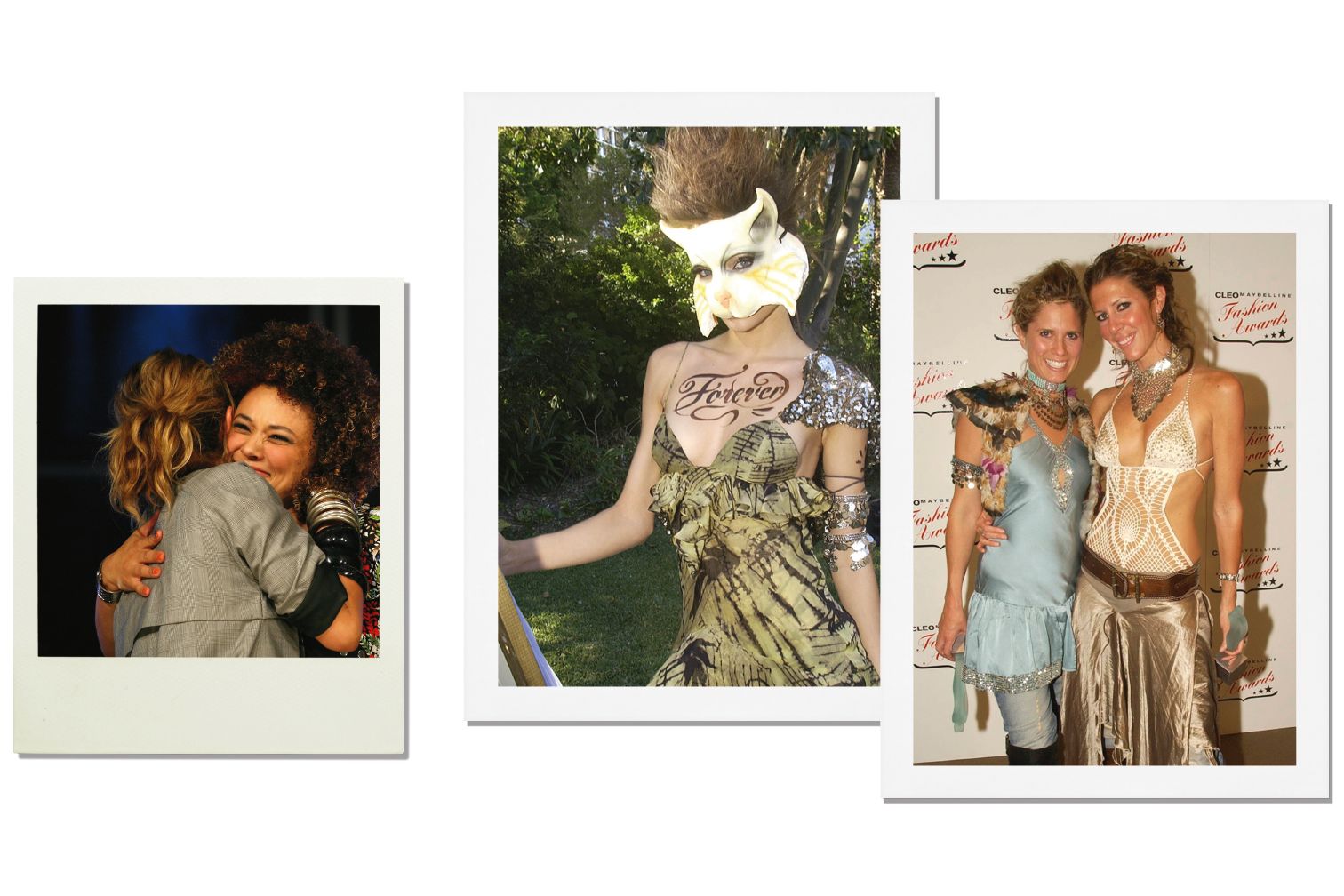
PIP EDWARDS: I was in London in 2003/2004 and Heidi and Sarah-Jane asked me to be in their show. I had, like, rat tails in my hair – the full Aussie vibe. They put me in the show and I was the only Aussie, with Mad Max braids and a mohawk, and Dan and George did the body graffiti on all the models.
SARAH-JANE CLARKE: It was interesting how everyone sort of crossed over. It wasn’t like we made a point of it – it was just that our friendship circle back then was full of creatives and we were like, “Can you do the music?” and “Can you paint this?”
HEIDI MIDDLETON: Everyone was leaning on each other, everyone helped each other. The Ksubi guys would do the music for the shows. It was very interlayered. It was good.
DAN SINGLE: I was good friends with Heidi. Akira was cool. Julia Wilson was a designer at Zambesi but she came to work for us. Michelle Jank was great, and she worked for us for a little while, too. George is really close to Wayne Cooper. And we used to go to Peter Morrissey’s house for dinner ’cause we were young and cool and he wanted to tell us about the fashion industry. We’d turn up at his house and he was like, “Alright boys, I’m gonna give you the schooling.” It was amazing.
PIP EDWARDS: At the start, Dan and I had really bad energy. We didn’t really like each other. I think we didn’t really understand each other. And then I remember Mikey Nolan [Double Rainbouu] sitting us down one time and he said, “Can you two just get over yourselves because you’re actually in love.” And we were kind of like, “Oh. Yeah, maybe we are?”
HEIDI MIDDLETON: SJ’s and my partnership worked very well. Neither of us are really confrontational, so we usually resolved anything we didn’t agree on very calmly. It was a real joy to be able to work with my best friend and build this successful business at the same time. And to be travelling the world, being creative and having these amazing experiences. It felt almost too good to be true. But we really were aware of that at the time and I guess wanted to keep each other grounded because it did feel unrealistically dreamlike. We weren’t even thinking about whether or not something would sell. It was more, “How much do we love it?” I feel like our work was creatively uninhibited, with less of a commercial slant.
NICKY ZIMMERMANN: It was about, how much fun can I have while I’m working? That was the main goal. And for me, fun is making things, you know?
SARAH-JANE CLARKE: There were lots of fails, for sure, on our business journey, because we were two young girls and it wasn’t like we’d done it before. And we certainly hadn’t studied fashion, so we just knew the vision and we knew what we wanted to wear. And we learnt most of it on the job, how to be an entrepreneur. But we were so positive and we had each other, and we were like, oh well, you know, if it all goes belly up, then we’ll just work another job and pay off the loan and we’ll be fine. And we didn’t have any kids, so it was such a time of absolute freedom. We used to use our instinct a lot and I think that sort of guided us mostly.
PIP EDWARDS: We were so on a whim and I think today, purely because of the landscape and social media and how sensitive things are, I don’t know if things would’ve moved as fast. Back then, Dan and I would be making last-minute outfits in Bali and bringing them back to the show. So there was a process, but it wasn’t a normal process. For one show, we made all these paper headphones. And just as one of the models started to walk down wearing the headphones, the music cut out. It went dead. It was a failure. And we were freaking out. But because everyone was wearing headphones on the runway, the audience thought it was on purpose. And then as soon as the guys with headphones left the runway, the music came back. You just can’t even script that, you know? Anything could go wrong and you could twist and turn it into magnificence, because there were no rules, no roadmap, and it was inspiring. And that’s a true disruptor. You don’t need a roadmap, you just go with the flow. You’re in the flow.
SARAH-JANE CLARKE: We did a runway show with handpainted singlets and denim. My boyfriend at the time, Daimon Downey [from Sneaky Sound System], did a lot of the paint work for that. And that’s when I guess the movement really started. I don’t know how it became such a cult, really. Now when you look at Instagram you can see how many followers a brand has; back then, you didn’t really know how popular you were. Mind you, we used to deliver the jeans to the retailers on a Tuesday and a Thursday. Word would get around town that the Sass & Bide jeans were coming at 10am on Thursday, so people would line up outside Bondi boutique Tuchuzy and wait for the delivery. So I guess we did know that they were quite popular …
HEIDI MIDDLETON: The jeans would sell out and there’d be this big waiting list and people would line up on the Saturday. Or my mum in Brisbane would call me to say, “There’s a queue eight blocks deep at the warehouse sale.”
PIP EDWARDS: When we opened in New York, they hadn’t finished the building; there was no window to the front of the store, it was open onto the street. We had the drummer from the Scissor Sisters and all these New Yorkers we were friends with turn up for the party, and there was no front to the shop. You know, everything was a bit crazy.
HEIDI MIDDLETON: In New York, we found this life-size stallion prop. We decided we needed him, so we were going to ship him back to Sydney. In the interim, he was put in our friend’s apartment near the Meatpacking District. We ended up having the afterparty for our first New York show there. It was next-level amazing, with this horse right in the middle. Dan and George and the other guys were there, and it was a melting pot of Aussies and New York friends. It went through the night and was one of the highlight parties of that decade. And, the horse made it to Sydney – I think he’s still in the Paddington store.
PIP EDWARDS: Dan was part of the biggest DJ group of the time, so whenever big artists were coming to Australia, of course they’d meet Dan Single because they’d play at [his club night] Bang Gang – and he’d also dress them in Ksubi. So it was this double whammy of access through music and fashion. And I think the difference with Ksubi is that it had that real grassroots kind of accessibility. You couldn’t get close to the designer at a party, but you could afford the jeans.
“Anything could go wrong and you could TWIST and turn it into MAGNIFICENCE, because there were no rules.”
DAN SINGLE: We were just doing it pure of heart, you know what I mean? We were doing it for us and our friends – for art and to experiment. Then people just gravitated towards that. It wasn’t like we were even trying to be cool or anything. It was just like, let’s see what we can do with this thing. We had such a cool network of friends and we were running the club thing and everyone just wanted to be around and wear the jeans.
SARAH-JANE CLARKE: The designers were the influencers back then, always were. Nowadays not so much. But back then, the designers, the founders, were really the people that everyone looked up to, to see what was coming next. So if Heidi and I got in and wore new styles around, then that was just the next thing, you know.
PIP EDWARDS: The beauty of our time is that you had to be there. You couldn’t just see it. Now we can see everything without needing to go to anything. But what you see is not the same as what you feel, you know? And in the 2000s that feeling was infectious. That’s why it was such a strong movement. We were our own drivers. We were our own influences… Obviously we didn’t have Instagram so it wasn’t a very documented time. There are things that we did that were so phenomenal, but there’s no evidence of it.
NICKY ZIMMERMANN: Although, you know, if you made a really terrible dress, no-one really knew…
GEORGE GORROW: Nowadays, what you can do is just hop on Pinterest at home and you’re seeing all those little things. But at the same time, everybody else in the world is also seeing those things. I liked the day and age when we were doing it because you had to go somewhere. You had to feel it, touch it, it had to inspire you. You had to get moved by it. And then you did your own version.
PIP EDWARDS: We were so loose. We were free. There were no meetings. It was like, Daft Punk are in town. Dan’s gonna go DJ with them. Oh, sling them some jeans, let’s go! It was that access to the right people. Dan was friends with Paris Hilton and all these people because he’d travelled the world and he was such a connector. I think the Ksubi boys were the pioneers of what we’re all trying to do now. They really were.
HEIDI MIDDLETON: [Brit-girl party planner] Fran Cutler loved the brand. We struck up this friendship with her and during one of our first Fashion Weeks in London, she was like, “Oh, you’ve gotta come to this party Jeff erson Hack is having.” He was dating Kate Moss at the time. It was at this townhouse in London and there were only 50 or 60 people there. And I remember having a dance with Kate on the dancefloor and then we met Stella McCartney and Christina Aguilera. I remember Jefferson coming up to us and saying, “Oh, I love your style, you two.” We thought that was everything, because we loved Dazed & Confused, the magazine [he founded]. And I remember having a moment with Alexander McQueen, Bella Blow was there ... It was just that London crew in the glory days. It was quite an iconic moment for Sass & Bide.
MARIE-CLAUDE MALLAT: Nicky and I would literally pack a suitcase of samples and wheel it around London or New York or Paris, with a map in hand, knocking on doors of the big publishing houses. We had one big hit when we went to see a big British magazine and the fashion director took a few samples off on a trip where she was shooting an emerging model. Turned out it was Helena Christensen. She appeared wearing Zimmermann in a massive multi-page spread and things really started to take off once we got that momentum.
SARAH-JANE CLARKE: We were in America and we were doing a sales appointment at Bloomingdale’s. We used to just lug our suitcases around, full of samples to show the buyers. And we were walking back from, I think it was Barneys or Bloomingdale’s, and we walked past the set of Sex and the City. They’re filming out on the street and Heidi was like, “Oh my God, that’s Sarah Jessica Parker.” And I’m like, “Who?” Because I didn’t really watch much TV. She was like, “Sarah Jessica Parker!” I had a jacket on and I ripped it off and we went over to the security guard and were like, “Hi, we’re Sarah-Jane and Heidi from Sass & Bide, could you give Sarah Jessica Parker this jacket?” And he actually took it, he went over to her and she took the jacket and came over and said, “Girls, this is so lovely, so beautiful, thank you so much. I’d love to see what else you do, meet me in my trailer tomorrow at midday.” So we took our little suitcases off to her trailer the next day. And we met Mr Big and some of the other cast. And Sarah Jessica Parker was running around in her little knickers, and there we were there in our top hats…

HEIDI MIDDLETON: That jacket was called the Funky Thompson. Those were very early days, probably six months or a year into the business. And the press off the back of that was just quite extraordinary. I think it was even in the news on TV.
SARAH-JANE CLARKE: It was a bit more hectic, wasn’t it, in the noughties? It was quite glamorous, too. The Kardashians were just coming in. We were stocked in their Dash store for a while. Dash wasn’t successful for us but Kim actually wore the brand on Keeping Up With the Kardashians. But back then, Kim Kardashian wasn’t that cool. So we were like, no, we can’t put it out to the press that she wears it!
DAN SINGLE: One Fashion Week by about, I don’t know, year three, we were, like, rich and young and cool and everything’s great, so we thought, we don’t need to do a show anymore. Shows are boring. Why don’t we just take the buyers on a really nice experience and sell jeans? So let’s hire a boat, a big yacht on Sydney Harbour, and drink champagne and show the buyers the best day of their lives. So we hired this boat for the week and we organised parties every night during Fashion Week but that had nothing to do with Fashion Week. We were just, like, doing our own renegade parties every night. Jared Leto came out, this hip New York crew. And then one day on the boat, we were like, this boat’s sick, but you know what we’re missing? A show. So we ended up doing a show where we had the models walk the plank and then off into the harbour and then come back through wet.
SARAH-JANE CLARKE: We were offered so many partnerships and collaborations, we were really sort of peaking around that time. We did a few odd ones, like an emery board, we had a watch, we had a Range Rover ambassadorship and Veuve because we won the Veuve Clicquot Award. We did an Xbox collab. I was like, who?
SIMONE ZIMMERMANN: It all had the feeling of being on the cusp of newness. Now the business is of a different magnitude and we’re often doing things that are kind of new to us, but it doesn’t have that same feeling of being at the frontier. Like you were out there on your own a little bit.
DAN SINGLE: I think everything was special because everything was new again. It was the beginning of a new, fresh cycle.
HEIDI MIDDLETON: It was very creatively experimental, and I felt like we were being fuelled by this external energy. Sometimes in life you feel like things are almost happening to you. I mean, yes, we were making it happen and we were working hard and we had a vision, but there was also this intangible force of energy around us that was pushing us in that direction. It’s like we had it, riding this wave, this ball of energy, and we were holding onto it and it was just rushing along.
PIP EDWARDS: It was a wild time.
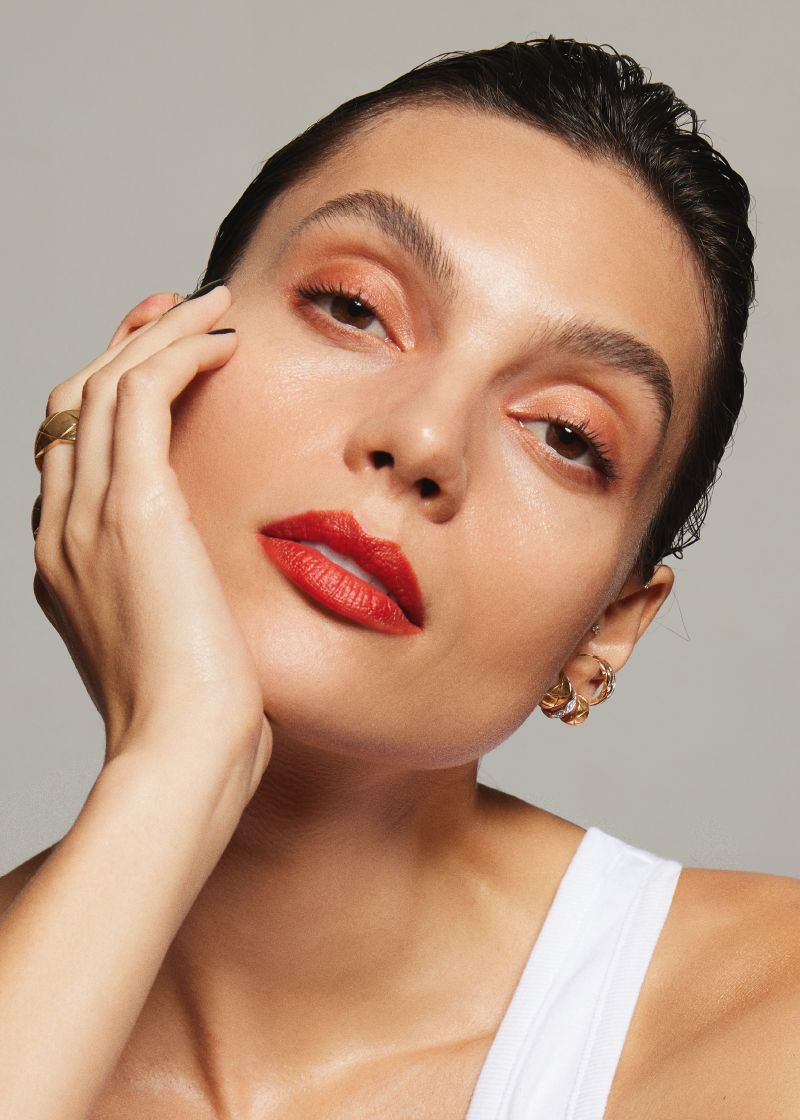
About face
Charlee Fraser carved out a career as one of Australia's most successful models. For her second act, she's taking over the big screen
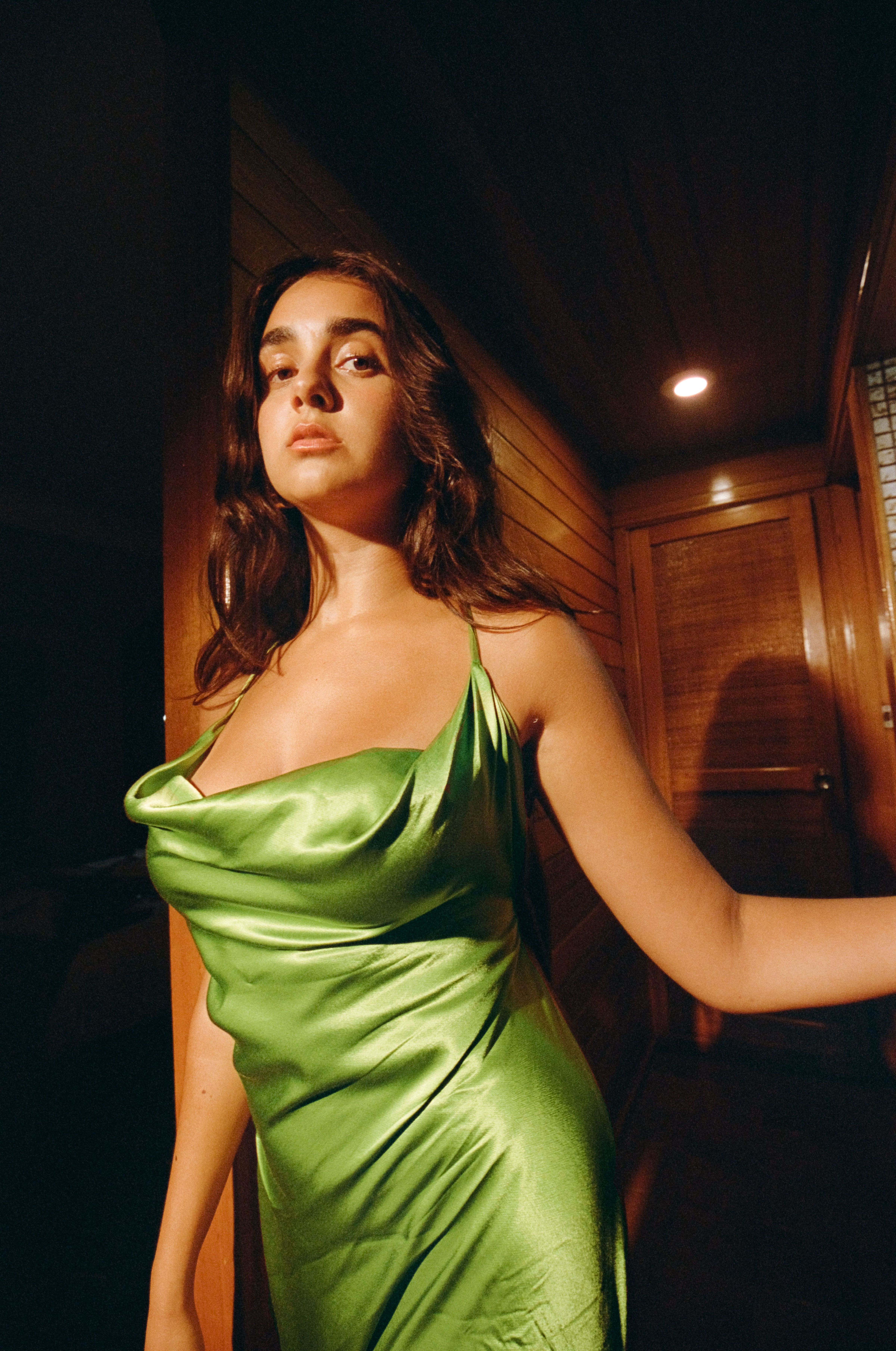
Bright star
Australian actor Geraldine Viswanathan has the kind of Hollywood CV most young actors dream of and, as Courtney Thompson learns, she's only just getting started
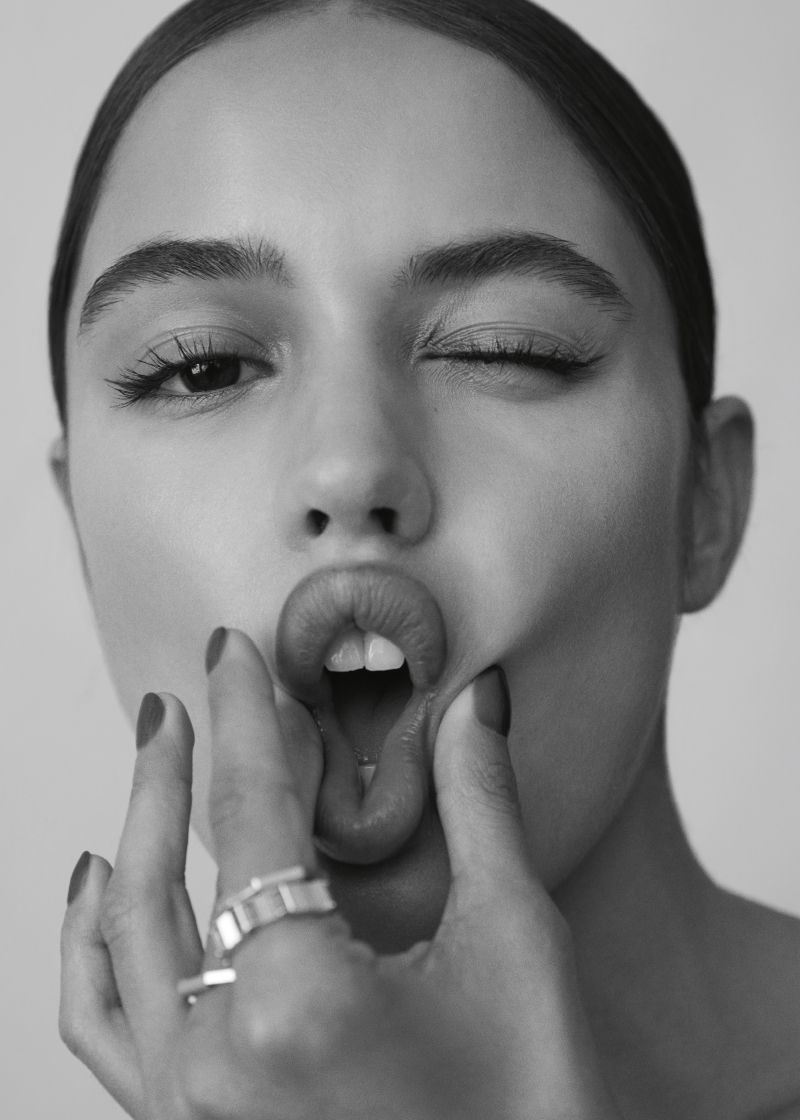
Stealing beauty
Dream holiday vibes for sexy, sweaty days and nights
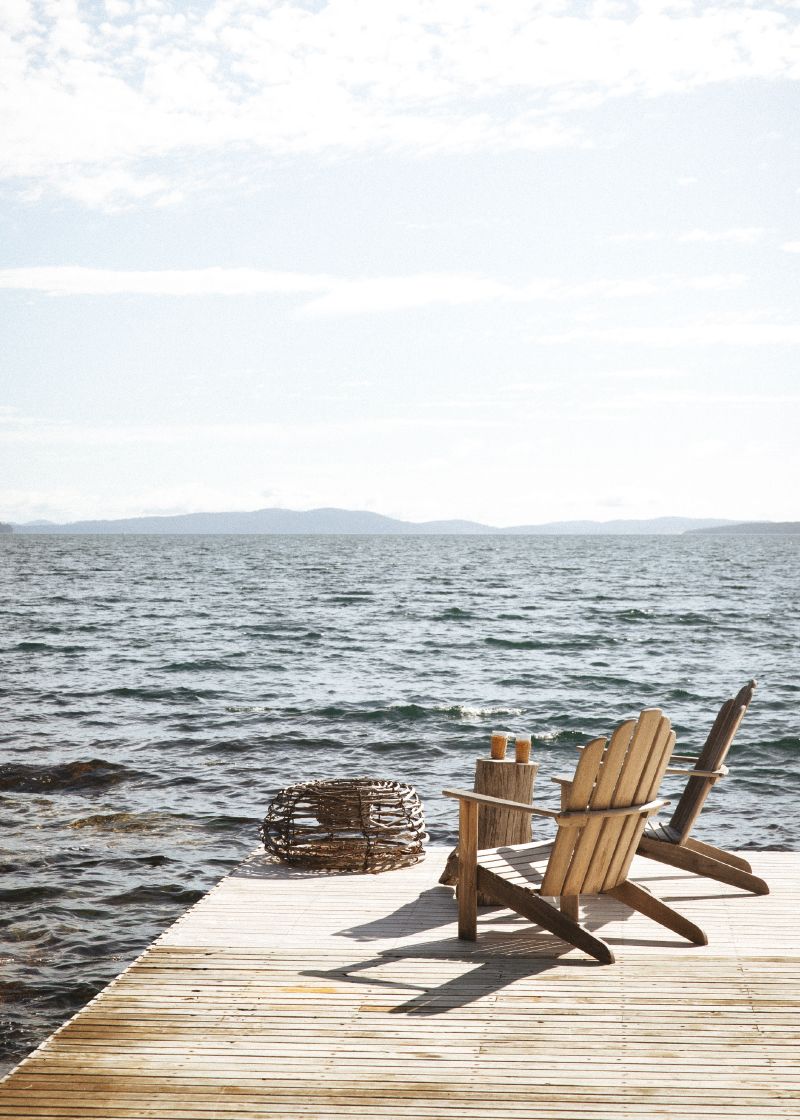
Magic of the mini break
Small in length but big on impact, the micro-cation is one of life’s underrated pleasures. Check in to one of these dreamy Australian stays, and totally check out

Woman of the night
With the launch of Rouge Allure Velvet Nuit Blanche, a classic Chanel icon gets an updated look that has the power to totally transform your energy